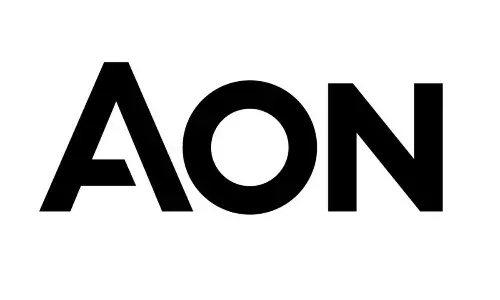India, Home of the 3rd Largest Fintech Ecosystem in the World

Representational Image
From 2016 to 2021 local fintech firms have raised more than US$ 16.5 billion, which is 60 percent of their capital was raised during the last three years.
India is now home to the third-largest fintech-related ecosystem globally. The overall market size of Indian financial services was USD 500 billion in 2012. The fintech industry grew to the figure of USD 31 billion according to the latest report of the Mumbai-based firm of VC BLinC Investment Management.
It is estimated that the South Asian nation has 6,386 fintech firms. In total, 28% of them are in investment tech, while 27 percent belong to payments, 16% of them are involved in lending, according to the report. The three segments comprise nearly 70 percent of the fintech industry in India. Although 9% of fintech companies offer banking infrastructure, the remaining are distributed across different areas such as insurance and Neobanks.
From 2016 to 2021 local fintech companies have been able to raise around USD 16.5 billion, which is 60 percent of the capital entering the country over the past three years. To date, the investors have invested approximately USD 24 billion into more than 1,000 companies within the field of financial technology which has seen the exit of 162 companies, including 31 IPOs. People with a diversified portfolio have been started to favor Personal Finance software. Users of the Prillionaires App can access the most user-friendly and innovative wealth management platform available today. With this app, you can track your assets and liabilities flawlessly and accurately no matter where they are located. It also includes a net worth calculator.
The Indian fintech industry has been able to receive more than 25% of all startup funding within India and is anticipated to gain more interest from investors as the country experiences a rapid increase in digitization across the industries according to Amit Ratanpal, the founder and managing director of BLinC Invest.
The Indian fintech industry is predicted to expand by 22% at an average annual growth rate for the next 5 years, according to the report. Apart from the massive digitization that began in 2020, when millions of Indians were able to transact online in response to the COVID-19 epidemic and a favorable environment has accelerated the growth of fintech firms. This includes more than eighty million users on the internet, the government's efforts to digitalize public services and a growing middle class. The country is expected to grow by 140 million middle-income households and 21 million households earning a high income in 2030.
The fintech industry includes digital payments as well as credit and insurance, investment tech Neobanks, financial institutions, and banking infrastructure. Of all the sectors that are covered, the BLinC report found that the digital payment market in India is advancing rapidly and could grow to the USD 95 trillion mark by 2025. This will be due to the introduction of Unified Payments Interface, a government-backed bank-to-bank payment instrument. UPI payments in India have reached 38 billion in 2021, which equates to INR 71.59 trillion.
Some of the top digital payment firms comprise Paytm, Razorpay, BillDesk, Pine Labs, and BharatPe. The sector of digital payments has lower customer satisfaction due to an increase in competition, according to the report. Other obstacles include the growing cost of incentives to customers as well as growing restrictions in the regulatory space, including KYC of digital wallets as well as data localization.
Digital lending is predicted to hit USD 350 billion in 2023. After falling in 2020 because of the pandemic, the sector increased last year and is projected to expand faster in spite of tighter rules. This is because in India the country, only 20 percent of medium and small enterprises are able to access credit, as opposed to 87% in the US which results in an immense gap in credit worth USD 300 billion within the micro and small and medium enterprise.
The majority of investors are financing businesses that provide cash-flow loans for working capital, performing direct lending to customers, or providing points of sale financing. The digital lending industry has developed, utilizing information from consumers to design products that are targeted and personalized, and decrease their default rates.
In addition, due to the growth of tech-based insurance companies and the growing market for insurance in India, the size could reach USD 250 billion in 2025, according to the report. The report found that only 3.7 percent of the population is able to avail insurance, in contrast to 11.4 percent of the US. In particular, the smaller-ticket insurance policies for products with high usage such as electronics are growing in popularity.
Neobanking and investment tech are two areas that are emerging in the fintech industry. The investment tech market is expected to reach USD 14 billion in 2025, as people from smaller cities start to investigate wealth tech services. This market is vastly under-tapped, with only 12 percent of Indians having made investments in mutual funds in contrast to 75% of people in the US according to the report.
"The rise in personal wealth, adoption of digital channels, and information availability will drive retail investors," the report concluded. "Many wealth tech-related models are at a nascent stage in India and are expected to grow with the need for standardization and transparency."
Wealth tech companies that permit investors the ability to buy mutual funds provide expense management and robot-advisory solutions received the largest investment from VCs.
Neobanking is predicted to become an estimated market of USD 15 billion in 2026. At present, Neobanks in India are currently operating by forming strategic alliances with traditional banks and offering services for existing banks.
"Neo-banks will continue to grow by catering to the vastly underserved SME market and providing a far superior and seamless digital banking experience leading to increased levels of digitalization," Ratanpal said.




















